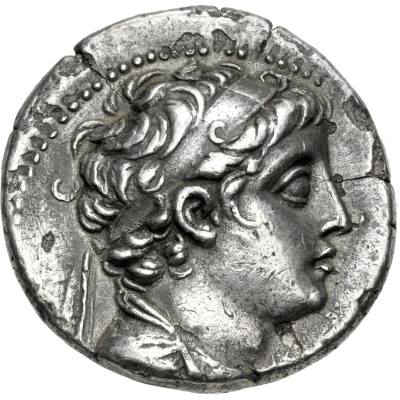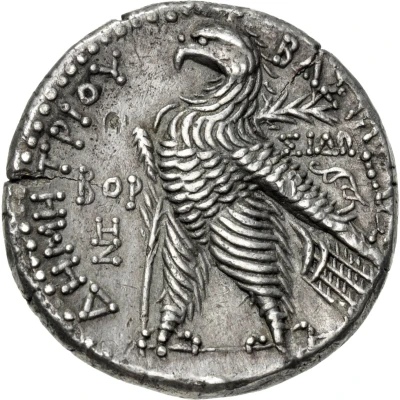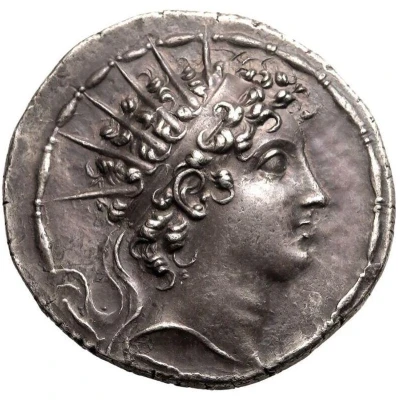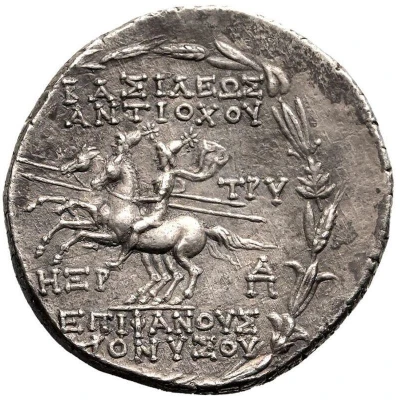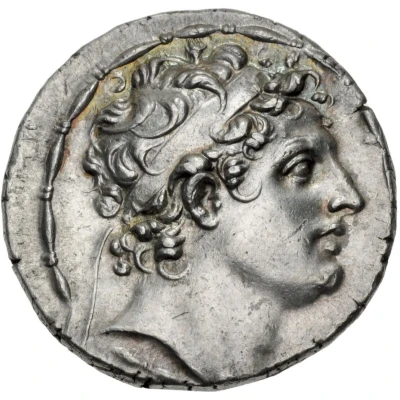
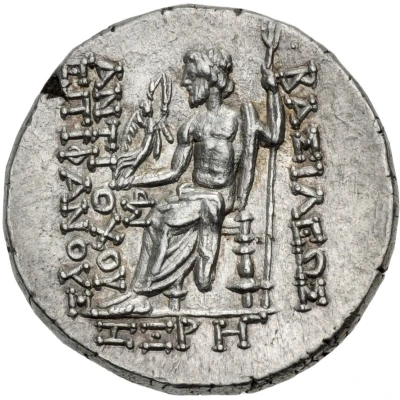

Tetradrachm - Antiochos VI Dionysos Posthumous Issues 146 BC - 145 BC
| Silver | 16.64 g | 27.5 mm |
| Issuer | Seleucid Empire (Seleucid Empire (305 BC - 64 BC)) |
|---|---|
| King | Antiochos VI Dionysos (145 BC - 140 BC) |
| Type | Standard circulation coin |
| Years | 146 BC - 145 BC |
| Value | Tetradrachm (4) |
| Currency | Drachm |
| Composition | Silver |
| Weight | 16.64 g |
| Diameter | 27.5 mm |
| Shape | Round (irregular) |
| Technique | Hammered |
| Orientation | Medal alignment ↑↑ |
| Demonetized | Yes |
| Updated | 2024-10-10 |
| Numista | N#425258 |
|---|---|
| Rarity index | 97% |
Reverse
Zeus Nikephoros seated left; monogram to inner left, ZΞP (date) and monogram in exergue.
Script: Greek
Lettering:
ΒΑΣΙΛΕΩΣ ΑΝΤΙΟΧΟΥ ΕΠΙΦΑΝΟΥΣ
ZΞP
Translation:
The King Antiochos Epiphanes
Year (167 SE)
Comment
In the final year of Alexander I Balas' reign, Demetrios II Nikator, seeking to avenge the death of his father, Demetrios I Soter, advanced on Alexander from Cilicia, supported by troops of Ptolemy VI of Egypt that advanced from Palestine. Alexander fled from Antioch to rally his forces at a chosen location to the east. Between this time and the arrival of Demetrios' forces, Antioch struck a very short series of tetradrachms and drachms in the name of Antiochos IV, which is confirmed by the dated tetradrachm issues. While the chronology is certain, the purpose of the issue remains unknown.
Interesting fact
One interesting fact about this coin is that it features a posthumous issue of Antiochos VI Dionysos, who was a Seleucid emperor who ruled from 146 BC to 145 BC. Despite his short reign, he had a significant impact on the empire's coinage, as he introduced a new standardized system of coinage that included the Tetradrachm, which was a silver coin weighing 16.64 grams. This coin was an important part of the Seleucid Empire's economy and trade, and it has been found in archaeological excavations in various parts of the ancient world, providing valuable insights into the empire's economic and cultural history.
